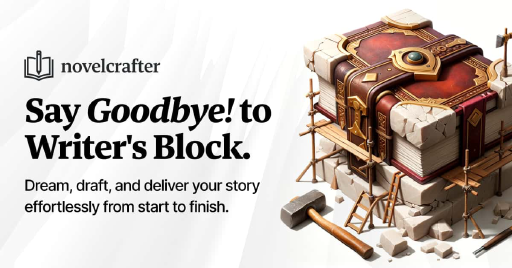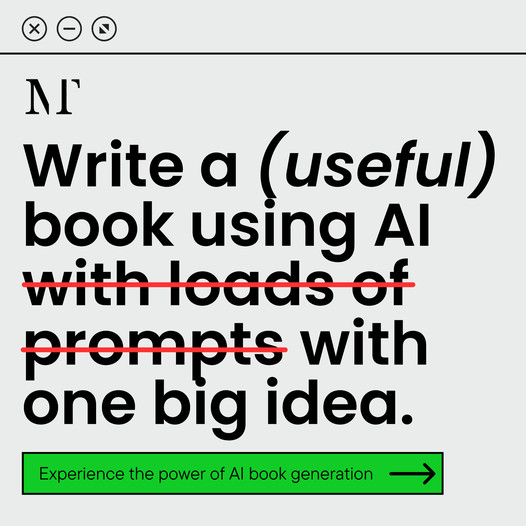Creating Memorable Villains
Get ready to stir some trouble in your story! Crafting villains that are believable and memorable adds fuel to your narrative. They’re the spice that turns an okay plot into a gripping adventure.
Why You Need Villains with Grit
Villains that spark with life add depth to your tale. When your readers “get” why the bad guy is doing what they’re doing, they’re instantly hooked. Aim for a villain that can pull out emotions from hate to maybe just a dash of sympathy. This dance of emotions is your golden ticket to an addictive story.
| Character Trait | What It Does |
|---|---|
| Motivation | Keeps the villain on the move and relatable |
| Complexity | Throws in some layers, so they’re not just cardboards |
| Development | Changes over time, keeping readers engaged |
How Villains Shape Your Tale
Your story leans heavily on your baddie to push things forward. A juicy villain makes the hero question themselves, push boundaries, and sometimes even do a little growing up. They stir the pot, ignite big conflicts, and help spotlight the hero’s strength.
By piecing together villains that feel real, you’ll crank up your narrative’s power. They’ll make your plot twistier and give your hero’s journey some extra zing. Want a few more tricks on character development? Check out our piece on how to develop characters in a story. Keep your plot juicy and your readers coming back for more!
Developing Bad Guy Characters
Creating engaging bad guys—ones that your readers love to hate—takes a good dive into what makes them tick. By really getting these bits right, you’ll end up with characters that stick in folks’ minds and make your tale sing.
Digging into Bad Guy Motivations
What gets a bad guy or gal going is at the heart of who they are. Basically, you’ll want to pin down what makes them tick. This involves looking into what they want, what keeps them up at night, and those past demons that haven’t stopped haunting them. Here’s a peek into what might drive your villain:
| Why They Do It | What It’s About |
|---|---|
| Payback | Getting back at those who’ve wronged them |
| Control | Wanting the upper hand in any situation |
| Love | Making questionable moves all for affection |
| Staying Alive | Doing whatever it takes for themselves or family |
| Beliefs | Justifying actions through strong, unyielding ideas |
When you get to the bottom of these drives, the bad guy becomes more than a face of evil—they’re someone with a twisted sense of purpose.
Adding Layers to Bad Guys
Next up—shape those bad guys into more than just meanies. Give them layers so they’re interesting from all angles. Here’s some personality traits to play with:
| Personality | Why It Matters |
|---|---|
| Charming | They can sway or fool others easily |
| Feels Too Much | There’s heart there, making them unpredictable |
| Smart | Outmaneuvers heroes, upping the stakes |
| Unsure of Themselves | Fears that push them to do bad things |
| Tricky | Keeps folks guessing, adds tension |
Blend these traits with their motivations. Maybe your sharp-witted villain concocts the perfect payback, or the self-doubting one masks their weakness by controlling others.
For the lowdown on giving your characters more depth, check out our guides on how to develop characters in a story. All in all, rounded bad guys make for stories that stick, leaving your audience with some good stuff to chew on.
 What Poetry Feels Like
What Poetry Feels LikeStrategies for Crafting Villains You Love to Hate
When you’re cooking up a villain, you want ’em to be more than just a big baddie. You need complexity! With a touch of backstory and a soupçon of depth, you can whip up a villain that grabs your readers’ attention and refuses to let go.
Give Villains Some Juice
A great villain isn’t just a cardboard cutout; they’re a whole entertainment package. Here’s how to make sure your villain hits all the right notes:
| Main Ingredients | Recipe Tips |
|---|---|
| Conflicted Morality | Maybe your villain’s got their own crazy code or beliefs pushing them into mischief. This makes things nice and murky. |
| Relatable Hang-ups | Toss in some human weakness, like being a worrywart or scaredy-cat. Suddenly, they’re someone you might just get. |
| Surprising Skills | Who knew? Maybe they’re an artist at heart or the next chess champ. It’s these talents that keep ’em interesting. |
| Missed Wins | Dig into those dreams and goals that slipped through their fingers—adds that extra layer to their drive. |
Mix up these bits, and you’ll find yourself rooting for your villain even if you’re supposed to be shaking your fist at them.
Cook Up a Juicy Backstory
Give your villain a past so rich, they could hang out with old friends and reminisce for hours. Think about these juicy details while you’re crafting:
| Backstory Ingredient | What to Include |
|---|---|
| Early Drama | Unearth key moments from their kid days that shaped who they are now. |
| Important Bonds | Dig into their web of personal ties—who was there and how these folks pushed them along their twisted path. |
| Big Life Shifts | Flag those experiences that took them from zero to villain-material real fast. |
| Heart-wrenching Losses | Tragedies that changed their tune and got them on this rough road. |
A rich backstory makes your villain come alive, making it all the more fun when they do their dastardly deeds. Need more tips to bring your characters to life? Check out our take on how to develop characters in a story.
Next time you’ve got a villain needing some personality, think layers and details. A villain with personality is a villain folks love to hate—and can’t stop talking about! Head over to learn more about building villains that’ll steal the show.
Villainous Actions and Reactions
Building believable villains means thinking through what they do and how they react in ways that the audience can really get. Nailing down these details can turbocharge your story, turning your villain into a real showstopper.
Plotting Villains’ Actions
As you cook up what your villain’s gonna do, think about what makes them tick and what they’re trying to get. Everything they do should match who they are, and it needs to push the story forward. Here are some things you might want them to try:
| Action Type | Description | Potential Consequences |
|---|---|---|
| Manipulation | Pulling the strings and messing with people’s heads. | Breaks trust and stirs up trouble among characters. |
| Violence | Using force or making scary threats. | Builds fear and pins the villain as the danger zone. |
| Sabotage | Wrecking other people’s plans to get ahead. | Pits them right against the heroes. |
| Betrayal | Stabbing friends or family in the back. | Tears apart relationships and adds layers to the character. |
When your villain’s actions are based on solid reasons, they’ll have a steady impact on the story. Always think about how what they do affects not only them but the heroes, too.
Portraying Realistic Villain Reactions
Villains, like real folks, should show a spread of feelings and reactions based on what’s thrown at them. Keeping it real makes them more believable and hooks readers firmly into your world. Consider these situations:
| Situation | Possible Villain Reactions | Emotional Response |
|---|---|---|
| When a hero comes at them | Brimming with anger or staying cool and collected | Defensive or headstrong |
| Hit with a setback | Feeling overwhelmed or cooking up revenge | Nervous or fired up |
| Going through a loss | Feeling raw, showing sadness, or turning sly | Hit with shock or bite back |
| Spotting a betrayal | Getting furious, betraying others, or faltering for a bit | Torn or spitting mad |
Weaving these reactions around the villain’s usual way of being makes them complex and their responses something readers feel. For more tips on building characters, check out our post on how to develop characters in a story.
Linking smart actions with true-to-life reactions beefs up your villain, making them a draw of your story. Want to get better at writing stories? Swing by our guide on how to improve writing skills.
Intertwining Villains with Protagonists
Mixing up your villain and hero (or protagonist, if we’re being fancy) is like putting the right spices in a stew—it makes everything richer and more interesting. The way they interact can add layers to your story, making readers want to turn the page to see what happens next.
Villain and Protagonist Relationships
Villains and protagonists can have all sorts of relationships, not just the old good-versus-evil face-off. They can be frenemies, reluctant pals, or anything in between. Here’s a quick peek at some of these combos and how they can spice up your story:
| Relationship Type | Description | Potential Effects |
|---|---|---|
| Direct Enemies | Villain gives the protagonist a run for their money | Pumps up the drama and the stakes |
| Old Friends Turned Foes | These two go way back, but now they’re on opposite sides | Layers on emotional drama |
| Teacher and Pupil | When the bad guy is also the wise sage | Dives into shades of gray in right and wrong |
| Misunderstood Baddie | Villain’s just a little mixed up, not totally evil | Breaks the mold of traditional bad guy |
| Same Goals, Different Paths | They want the same thing but take different roads | Boosts curiosity and character development |
Now, when you cook up these relationships, think about how they make your characters grow and your plot crackle with excitement. A villain that’s a real challenge lets your hero show off what they’re made of.
Showcasing Villains’ Influence on Protagonists
A villain does more than twirl a mustache—they can have a serious impact on the hero’s journey and growth. Think about these key ingredients when highlighting this:
-
Tough Choices: A well-thought-out villain puts your hero in tight spots that test their morals. This is where character really gets defined.
-
Growth Spurts: Watch your hero level up as they clash with the villain. Notice how these skirmishes make them question or dig in deeper on their beliefs.
-
Emotions Run Wild: Let’s see how your hero really feels—as in scared, mad, or even grudgingly respectful of the villain. These whirls of emotion can drive your hero’s actions.
-
Time to Act: The villain’s moves should push your hero to do something—anything! This thrusts your story into motion and keeps the tension humming.
Weaving in these elements boosts the story’s complexity, keeping readers on their toes. For more insights, you might want to check out how to develop characters in a story to dig deeper into what makes character relationships sizzle.
A battle of wits and wills between your villain and hero doesn’t just make your narrative meatier—it hooks your audience into the characters’ adventures, rooting for or against them all the way.
Final Touches for Realistic Villains
Making villains that really hit home involves showing their weak spots and letting them change throughout the tale. These tweaks can make your antagonists feel more real and fascinating.
Incorporating Vulnerabilities
Real villains aren’t just one-note baddies; they’ve got flaws and weaknesses that make them more human. Their soft spots might show up as emotional, psychological, or physical quirks. By showing these imperfections, you can build a deeper character that readers can relate to—even if they don’t agree with their nasty deeds.
Here’s a peek at some vulnerabilities that might crank up your villain’s intrigue:
| Vulnerability Type | Description | Example |
|---|---|---|
| Emotional | Linked to personal loss or insecurities | A villain out for revenge over a past hurt |
| Psychological | Driven by fears or obsessions | A villain unable to trust due to past betrayal |
| Relational | Challenges with family or social ties | A villain torn between family loyalty and personal ambition |
By mixing in these vulnerabilities, you invite readers to dive into what really makes a villain tick. Check this out for more on how to develop characters in a story.
Evolving Villains Throughout the Story
A villain that never changes can be as dull as dishwater. Instead, let your antagonist grow as the story unfolds. They might change their aims, wake up to their actions’ fallout, or even seek a shot at redemption. This growth brings depth and keeps readers hooked.
To make your villain’s changes believable, think about these ideas:
- Catalyst Events: Shake things up with pivotal moments, like a clash with the hero or a major loss.
- Inner Conflicts: Show their internal struggles over choices and morals, nudging them toward change in behavior or thinking.
- Foil Characters: Include other folks who reflect or challenge the villain’s path, spotlighting their growth.
Keeping track of these twists can make your story richer and more intriguing. For more on character growth during your writing escapades, check out our article on writing tips for fiction authors.
By letting your villains have soft spots and room to grow, you boost their realism and impact. This combo makes for a yarn that grips readers and gets them mulling over the shades of good and evil.

 Grab my poetry book, 'we're all just wanderers in the end' Here
Grab my poetry book, 'we're all just wanderers in the end' Here AD: Your Book Finally Written...
AD: Your Book Finally Written...